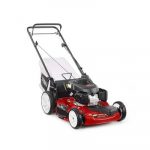So you live in an apartment, but you would love to have fresh vegetables for your meals without a trip to the grocery store. Sounds a bit far-fetched?
Actually, it isn’t! You may not have enough floor space on your balcony, but what about above the floor? There is enough unused space under the above balcony or on a wall adjacent to the balcony for you to grow vegetables upside down.
There are other benefits to an upside down vegetable garden. For one thing, you don’t have to perform such backbreaking tasks as tilling the soil, pulling out weeds, or stake plants so they don’t bend over. Watering is also so much easier.
It’s great for the vegetables, too. They grow more vigorously and they don’t touch the ground. This lessens the chance that the veggies rot and pests will have a harder time getting at them.
Vegetables that can be grown in an upside down vegetable garden include:
• Tomatoes
• Cucumbers
• Eggplants
• Beans
• Peppers
Moreover, the tops of the planters of the upside down vegetable garden can be used to hold other vegetables including:
• Lettuce
• Radishes
• Cress
• Herbs
Getting Started
You need to gather some supplies to construct the garden. They include:
• Large Hanging Containers
• Potting Soil amended with Compost
• Vegetables
• 5-Gallon Bucket For Larger Plants
Once you have the containers that will host the vegetables, you need to use a drill to cut a hole into the bottom of each. The hole is commonly 2-inches for large containers and buckets and a little smaller for other containers depending on their size.
Once the holes are drilled, you can hang the containers. Keep in mind that you will have to flip them back over (right side up) when you’re ready to place the plants.
Next, gather small pieces of newspaper, landscaping fabric, or coffee filter and stuff into the bottom of the containers. This will help to anchor the plant in place until it is strong enough to hold itself and prevent the soil from washing out through the hole you drilled when watering. Place a slit in the material so that the seed or small plant can maneuver through. Once the plant is long enough you should guide it through the hole upside down.
Planting
Put the plant into the container right side up. Hold its root ball in place as you place the soil/compost mix around it. Be sure to tamp the soil as you go. Fill the container to about an inch or so under the rim.
Hang the upside garden in a sunny location and be sure to water it thoroughly. Keep pouring in water until it runs out of the bottom hole. It’s possible that the garden will need water every day or every other day on hot, dry days.
(Source: Gardeningknowhow.com)







